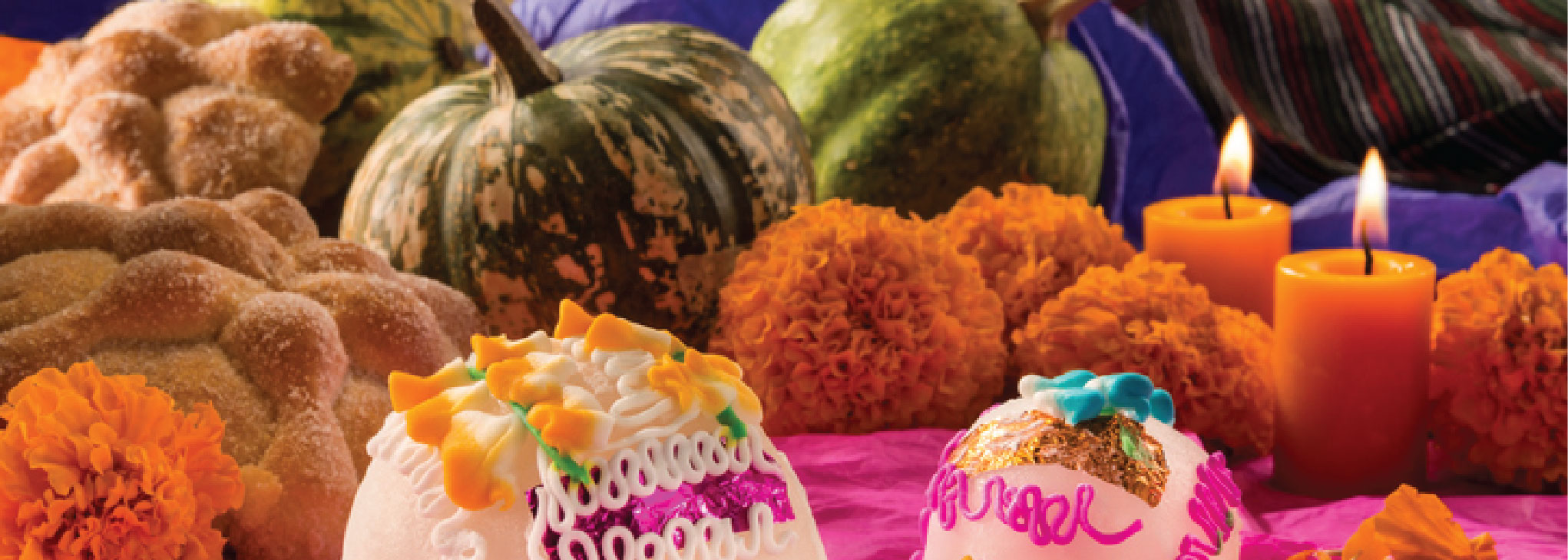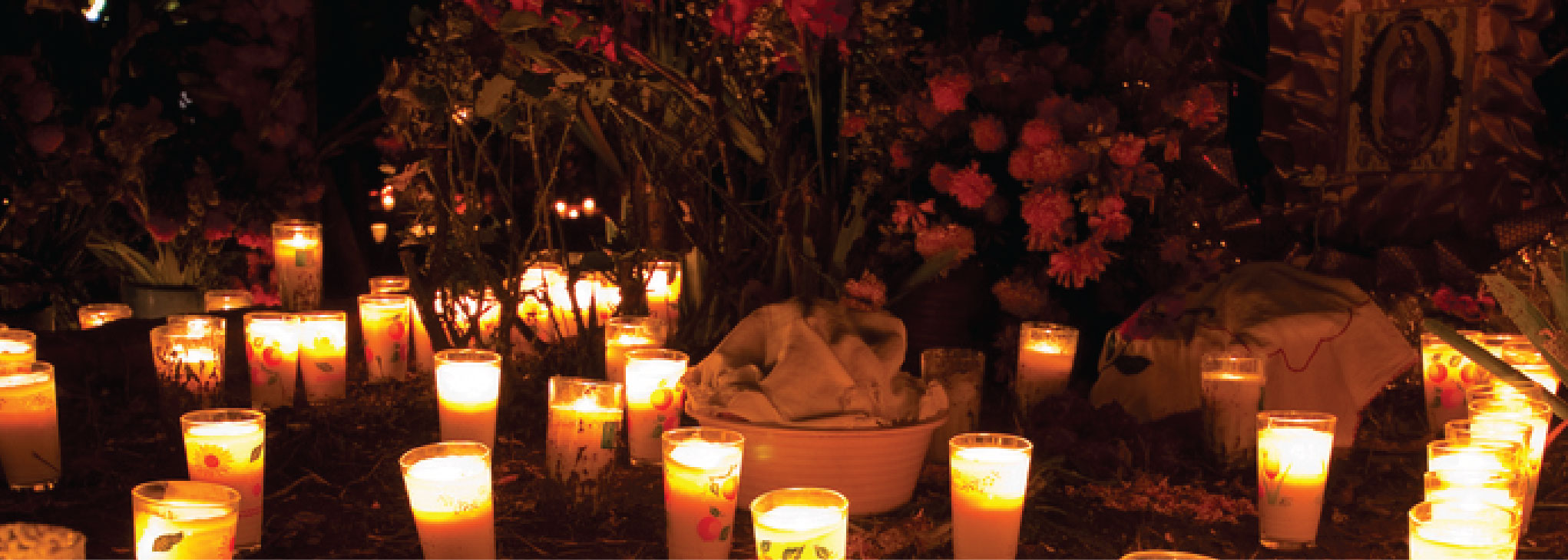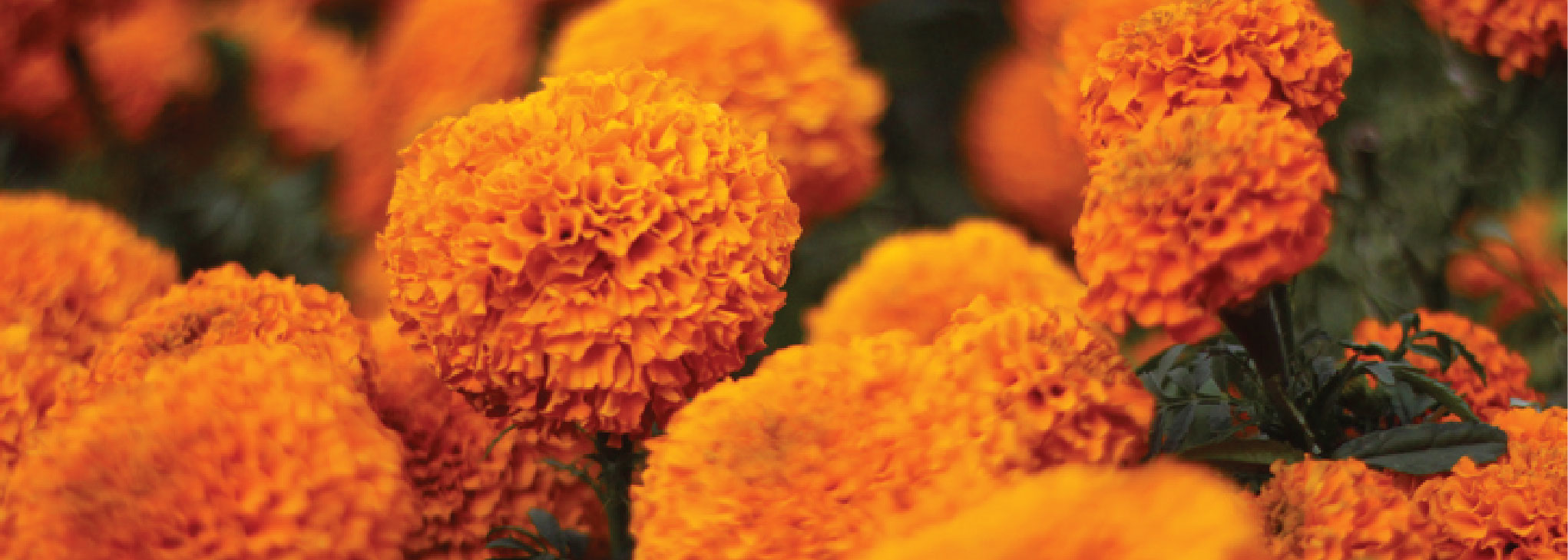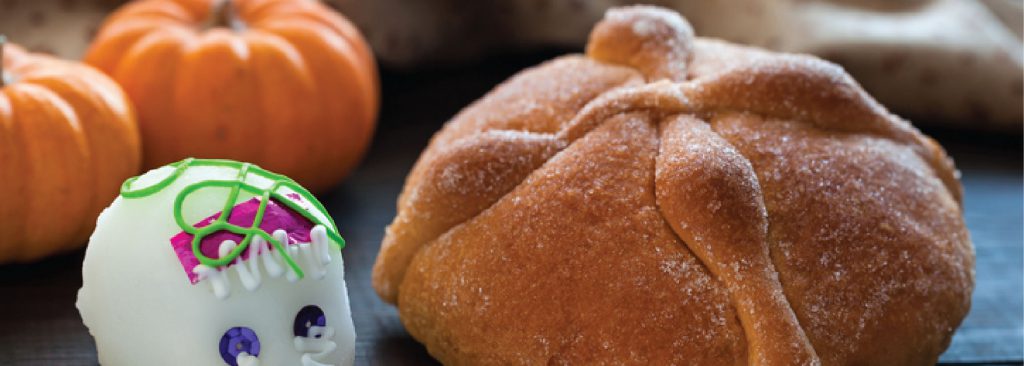There are more than 400 types of Pan de Muertos (bread of the dead) in Mexico, however, its origin is uncertain. Like many traditional Mexican dishes, there are several versions and theories about its origin, so keep reading to discover two versions about the origin of this culinary gem.

Rituals with offerings and sacrifices.
The first version says the origins of the bread of the dead is based on pre-Hispanic traditions, mainly in the offerings to the dead, which were made up of various regional foods like cornbread, similar to tamales, but heart-shaped, as this was the greatest offering that could be made to the gods.
Several historians and researchers have discovered that there were different versions of the origin of this bread in pre-Hispanic times. The idea of making bread arose from the desire to offer a princess to the gods, so they extracted her still-beating heart and placed it in a bowl with amaranth and the priest leading the ceremony ate the heart as a sign of gratitude to the gods. Others also believe the dead were buried with amaranth bread smeared with the excess blood of human sacrifices.

All Saints’ Day
The second version says that this bread resulted from Catholic tradition – All Saints’ Day (in Spanish). In this celebration, the bones, skulls and personal objects of the deceased, known as relics, were worshipped. During this holiday, sweets, bread and food were prepared which had to be shaped like some relics, like bones, for example. In Catalonia, these breads are made with almonds and are known as panallets, as this tradition comes from Spain, where they baked bread of the dead, the souls or bones of saints.

What is the meaning of bread of the dead?
Although the origin of the bread of the dead is uncertain, there has never been any doubt about its significance – to celebrate death and honour the dead.
Regardless of its origin, we’re more than grateful for this wonderfully tasty creation that finds its way to the table of every Mexican household during October and November each year. Wherever you go in Mexico, you’re sure to find the traditional recipe and many modern versions like vegan bread of the dead, bread of the dead stuffed with hazelnut cream, bread of the dead ice cream, and many other variations.







